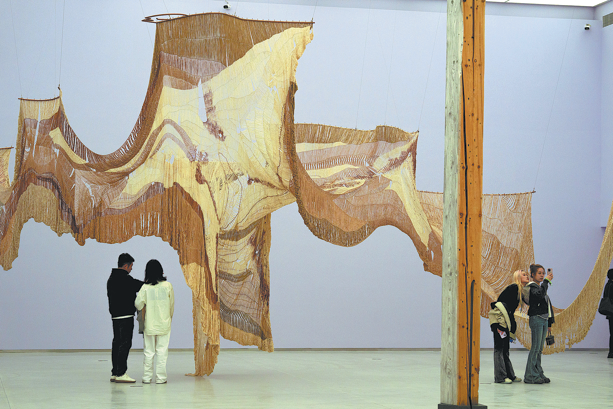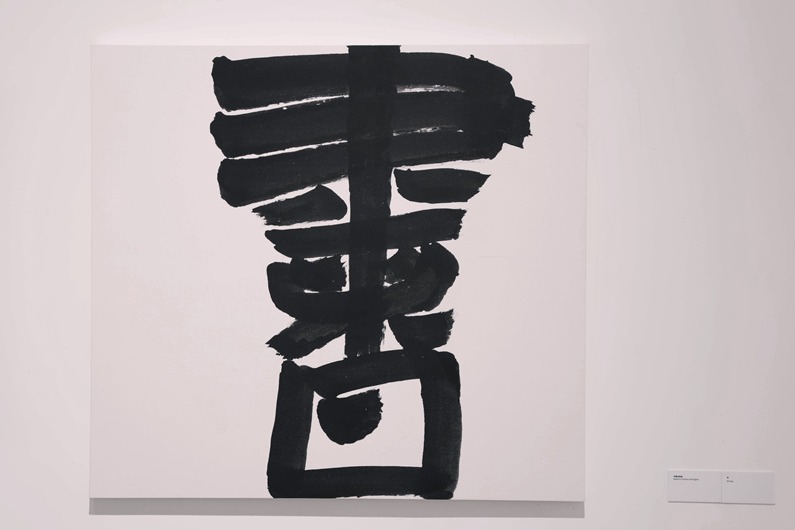A buzz in the air at arts festival


The 15th Shanghai Biennale, under the theme "Does the Flower Hear the Bee?", has transformed the Power Station of Art into an immersive garden, where 170,000 yellow blossoms are suspended in the air in the huge central lobby.
Beginning on Nov 7 and running through March 31, the biennale features more than 250 works by 67 individual artists and collectives from around the world, including 16 from China. Over 30 works are commissioned or new.
The opening earlier this month was attended by more than 40 artists from China and abroad, marking the largest gathering of artists at the Shanghai Biennale since it moved from the former Shanghai Art Museum to the PSA in 2012.
Launched in 1996, the Shanghai Biennale is the first international biennale of contemporary art on the Chinese mainland and one of the most influential in China.
The PSA, one of the first state-run museums dedicated to contemporary art in China, became the main organizer and permanent home of the Shanghai Biennale in 2012.
Throughout its past 14 editions, the event has "upheld the mission of supporting academic and cultural innovation, while continuously tracking social changes and trends in knowledge production in a global context with an open view", according to Gong Yan, director of the PSA.
Phantom Forest, an installation by the Puerto Rico-based duo Allora &Calzadilla, takes the most prominent location of the Shanghai Biennale this year.
Their work consists of tens of thousands of synthetic yellow blossoms floating high in the air without roots or branches.

The blossoms are reproductions of those from a tree native to the Caribbean that is threatened by resource extraction and climate change.
"This ghostly canopy thousands of miles from its origin folds distance into presence. We engage not in storytelling, but in building a system of memory — an ecology of displacement, migration and transformation," reads the artists' label for the piece.
This year, the Shanghai Biennale has been curated by Kitty Scott from Canada.
Former deputy director and chief curator of the National Gallery of Canada, Scott is currently the strategic director at Shorefast and Fogo Island Arts, a residency-based contemporary art program.
Inspired by scientific findings about how bees communicate and share knowledge with each other, and how flowers gather information by sensing the vibrations of honeybees' wings, the 15th Shanghai Biennale seeks to develop new types of sensory communication between artwork, visitors and the environment, Scott says, explaining the theme of the exhibition.
"We live in a moment of great uncertainty and global emergency that has given rise to a widespread sense of disorientation," she adds.
"Our world is transforming at a pace that eludes our capacity for comprehension, leaving us feeling bewildered and uncertain. If a return to the past is impossible, art offers us potential pathways out of despair and malaise, helping us find emergent forms of life and new modes of sensorial communication amid this instability."
Walking around the exhibition, which spans three floors of the PSA, visitors are encouraged to experience the exhibits with all their senses, as if strolling in a Chinese garden.
They see sculptures made by beavers gnawing at trees, and observe shadow animations synchronized with the real-time solar trajectory responding to the changing light in the exhibition.
At some point, they are invited to sing a song, or sit in a tent to enjoy a cup of herbal tea.
Aside from its main venue at PSA, the 15th Shanghai Biennale also holds "City Projects", open to the public at several of Shanghai's iconic urban spaces, including Jia Yuan Hai Art Museum and VILLA tbh.







































